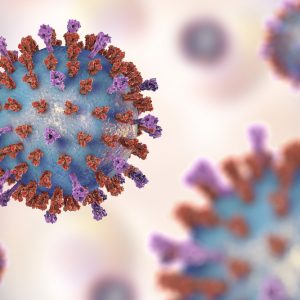Oropouche Virus
Oropouche virus (OROV) is one of the most common arboviruses that infects humans in Brazil. It is estimated that since the virus was first isolated in 1955, it has infected more than half a million people. However, it is often mistakenly diagnosed as Dengue, Zika or Chikungunya virus, and therefore true levels of infection are unclear.
The Native Antigen Company offers a range of Oropouche antigens to support the development of assays to reliably detect infection.
Oropouche Virus Background
Oropouche virus (OROV) is an RNA virus, belonging to the family Bunyaviridae. Phylogenetic analysis of OROV has identified 4 virus genotypes (I, II, III, IV), which all occur in Brazil. In humans, OROV causes Oropouche fever, which is clinically characterised by a rapid-onset acute febrile illness. Oropouche fever is reported to be the second most common arboviral disease, next to Dengue fever, in the Brazilian Amazon region. Other symptoms associated with the disease are like those reported for Dengue, Zika, chikungunya, yellow fever and include headache, myalgia, joint pain, nausea and vomiting. In some cases, OROV can cause a form of viral meningitis.
In humans, OROV is transmitted by the biting midge, culicoides paraensis, an insect vector that lives in urban areas and is widely distributed in South America. Since the virus was first isolated in 1955, OROV has caused 30 large-scale epidemics in the Amazon region, infecting at least 500,000 people. The incidence of Oropouche fever has now become widespread in Latin American countries where c. paraensis is present.
Considering the geographical spread of OROV and the similarity of symptoms between Oropouche and fever infections caused by Dengue, Zika, Chikungunya and Yellow Fever viruses, it is important to reliably differentiate between these arboviral diseases with accurate diagnostics.
References
- World Health Organization (WHO). Oropouche Virus disease – Peru. http://www.who.int/csr/don/03-june-2016-oropouche-peru/en/
- Vasconcelos, H.B. et al (2011). Molecular epidemiology of Oropouche virus, Brazil. Emerg Infect Dis. 17:800-6
- Sakkas, H. et al (2018) Oropouche Fever: A Review Viruses 10:175
Oropouche Antigens
At The Native Antigen Company, we understand the critical role that accurate diagnostics play in combating viral infections like Oropouche virus. Our commitment to advancing research is reflected in our high-quality antigen designed specifically for the detection and study of OROV.
Questions?
Check out our FAQ section for answers to the most frequently asked questions about our website and company.

